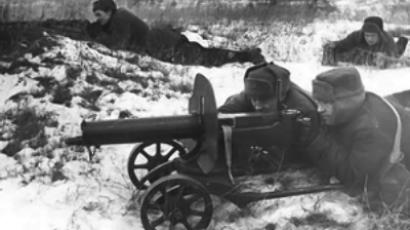Sevastopol siege: surrounded and soaked in blood
Bombarded in the first hours of war, Sevastopol survived a long terrible siege, becoming one the bloodiest pages of WWII and a field for the fiercest battles, both on land and on sea.
Ivan Losev was a teenager when the Second World War reached his home. He calls it a nightmare in paradise. The beautiful seaside town of Sevastopol in the Crimea was soaked in blood.
“When the Nazi troops came there, we were evacuated to a bunker on the coast. We sat there for three days. There was no water, so we had to drink sea water,” he recalls. “And there was absolutely no food. But it was too dangerous to go outside. German patrols checked the documents of residents. Those who didn’t have them were immediately shot dead. Those who did were sent to concentration camps.”
Sevastopol was one of the first Soviet cities to feel the bite of the war. The first bombardment happened on June 22, 1941, hours after Hitler officially declared war with the USSR. Sevastopol survived that attack. Five months later, when the German Army had already seized most of Soviet Ukraine, they returned, starting a long painful siege. Thousands of bombs fell on Sevastopol, a strategically-crucial city, which allowed access to the Black Sea. Locals had to hide underground.
For many months, thousands were crammed into small bunkers, waiting to be rescued. But when the Germans got too close, the Soviet military command ordered the underground facilities to be blown up.
Luybov Kotova was a nurse in a war hospital, located in a coal mine near Sevastopol. She managed to get out just minutes before explosive charges were set off, burying hundreds inside.
“We heard gunfire at the door and understood they were here. I looked around me and saw that there were too many wounded. We started to crawl out of the mine. Then I heard a sound of explosion. I ran and heard a roar of an airplane above me. We were shot at from the skies, but I managed to find shelter,” she recalls the moments of horror and despair.
Only in 1987 were top secret documents on the cause of this tragedy de-classified. It was revealed that the hospital inside the Inkerman mine complex also had a huge ammunition storage facility. Soviet generals could not allow the Nazi troops to take control of it.
“Those people had no chance whatsoever of being rescued. The only escape route was the sea. But by then, the Germans fully controlled the air over Sevastopol and any attempt to evacuate by water would most likely lead to the loss of the fleet. It was a choice of either losing the ammunition stockpile or lose the ships. Both were unacceptable for the Soviet command. But these people would not have been rescued anyway,” says historian Andrey Souystov.
The siege of Sevastopol lasted for more than 250 days. It fell in 1942, to be liberated from the Nazis by the Red Army two years later. Eyewitnesses say the Germans defended relentlessly, unwilling to give up this important port.
Nowadays, Sevastopol remains a strategically crucial place. It is home to the Russian Black Sea fleet. In the city which breathes history of bloodletting battles, they stay to ensure nothing like Sevastopol’s tragedy of 1942 happens ever again.













